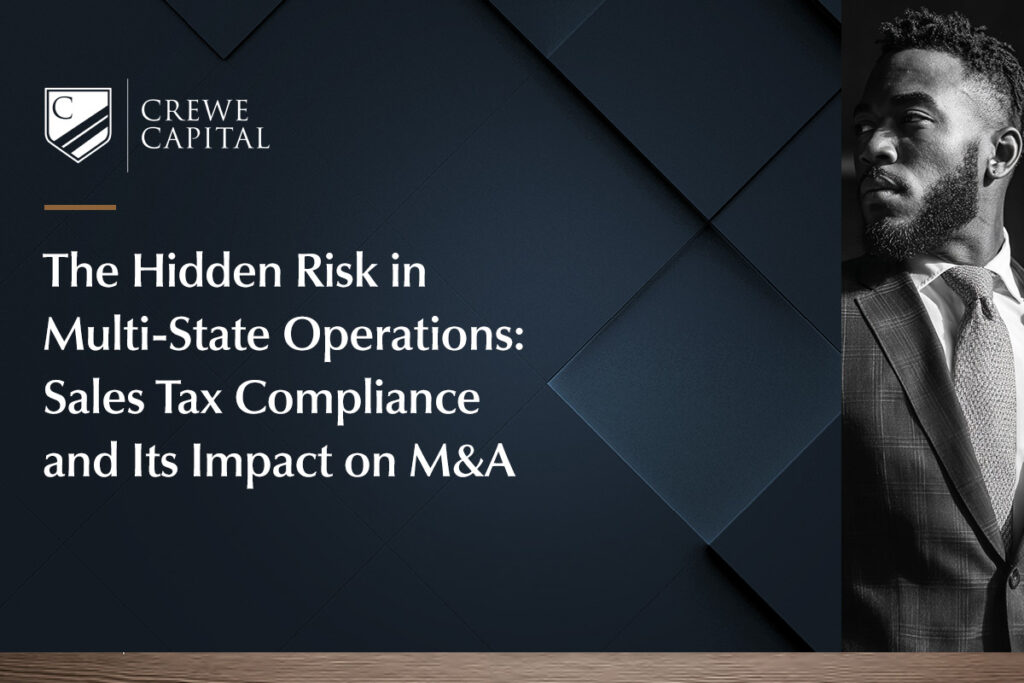Net Working Capital (NWC) is one of the most important negotiations in a transaction, often having the greatest economic effect compared to other terms in a deal. NWC is also one of the levers buyers can use to potentially lower the price they pay for an acquisition. Why then, does NWC so rarely get discussed until the transaction is almost complete? The answer to that question, and the topic of NWC in general, can be complicated. However, a good advisor should be able to simplify the explanation and act as an advocate to ensure the seller receives fair treatment. In this article, we will take a look at what NWC is, how it is used, and the benefits an investment banker can provide to sellers by negotiating its value.
What is Net Working Capital?
Simply defined, NWC is a company’s current assets minus its current liabilities and is used to gauge a company’s immediate liquidity. This metric can be viewed as the amount of capital a company needs to conduct normal operations. Over the course of a sell-side transaction diligence period, we often negotiate whether certain assets or liabilities should be included in the definition of NWC laid out in the purchase agreement.
During a sell-side process, a company typically sells all of its operating assets and operating liabilities, with the seller keeping any excess cash and paying off its funded debt (usually bank loans). This is where NWC comes into play. Defining the true value of what NWC needs to be allows for the seller to withdraw the surplus of cash from the company’s balance sheet before selling the business. In almost every transaction, there is a NWC true-up mechanism where the buyer and seller “settle-up” the difference between the agreed upon NWC target and the actual NWC at the time the transaction closes.
How and Why Net Working Capital is Used
There are two big reasons for a NWC true-up, protecting the buyer and protecting the seller, not to create a windfall for either party. The buyer wants to make sure the company they are buying has enough working capital to operate effectively following the closing. They do not want to be surprised by capital investments required immediately after the acquisition. For example, recalling that transactions are generally “cash-free”, the true-up prevents a seller from calling all customers with outstanding debt and offering them a discount if they pay off their receivables early (i.e., before the closing date) and walking away with the resulting cash.
Protecting the seller is the other big function of the true-up. The seller will continue to operate the business between the time the parties agree on a price, usually in a Letter of Intent (LOI), and the closing of the transaction. This time period is referred to as the due diligence period, when the buyer thoroughly inspects the company to ensure they want to acquire it. The seller deserves the profits generated during that period. Sometimes profits make their way into cash, but often the profits are still caught up in working capital accounts on the balance sheet. The true-up ensures the seller gets paid back for these investments in working capital, which are expected to benefit the buyer.
The NWC true-up is typically negotiated at some point after the parties have agreed to an LOI, which serves as the outline of the transaction and includes the purchase price. This gives the buyer an opportunity to conduct financial due diligence and verify the financial records and working capital needs of the business being purchased. The negotiated items typically include what accounts are included in the definition of working capital and a target amount of NWC that the seller must have in the business at closing. All of these items are included and defined in the purchase agreement. They are usually agreed upon days or weeks prior to the transaction closing. On the day the transaction closes, the seller provides the buyer with an estimated closing NWC calculation. If the estimated closing NWC is lower than the target NWC, the seller usually leaves some of the closing proceeds in the business. If the estimate is higher than the target, the buyer usually pays additional proceeds to cover the difference. The buyer then has an independent auditor confirm the numbers. Any differences are settled within an agreed upon timeframe spelled out in the purchase agreement. It is also common for a small escrow of purchase proceeds to be set aside until the NWC true-up is finalized after the audit. Generally speaking, this is how the true-up mechanism works. However, on any given transaction, a number of factors could affect the true-up, its components, calculations, and negotiations. Each transaction will be unique.
How can an Investment Bank Help?
Unfortunately, sophisticated buyers can sometimes use the NWC calculation and true-up to extract value from less sophisticated or under-represented sellers. Because NWC is typically negotiated after an LOI, while the buyer has transaction exclusivity, it is an additional point of leverage the buyer can use to reduce the price they pay for the business or negotiate other favorable terms. They will often use the complexities of the calculation, working capital cycle analysis, and timing to negotiate a favorable NWC target. It is critically important for sellers to understand the working capital needs of their business before entering negotiations.
Experienced investment bankers can often negotiate the NWC target and true-up to an amount that creates value for the seller in a transaction that more than covers their entire fee. Other advisors may not get involved with these negotiations, instead letting the client work out the calculations with just their accountant. The problem may arise that accountants are only focused on whether the calculations are correct according to the definitional formula rather than what items, or the period over which they are calculated, are appropriate for actually operating the business and the purpose of NWC in a transaction. Understanding the nuances of working capital and having an advisor willing to advocate on the seller’s behalf, throughout the entire transaction process, are critical to maximizing sale proceeds.
If you are considering selling your business and would like to discuss NWC or a sell-side process as a whole, please contact us at ib@crewe.designbotstaging.com.





